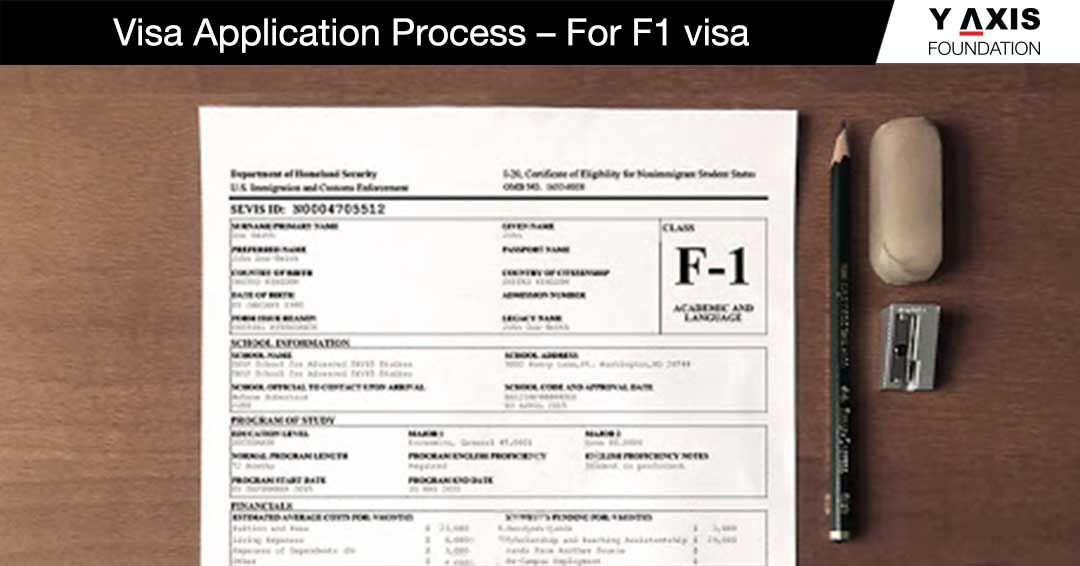
International Students who are not U.S. residents would require F1 Students visa to pursue their education in the U.S.
Once the university accepts the application and agrees to give admission, they will send i20.
The first step is to apply to a SEVP-approved school in the United States. After the SEVP-approved school accepts the student’s enrolment, he/she will be registered for the Student and Exchange Visitor Information System (SEVIS) and must pay the SEVIS I-901 fee.
The SEVP-approved school will issue a Form I-20 to the accepted students. After receiving the Form I-20 and registering in SEVIS, students have to apply at a U.S. Embassy or Consulate for a student (F or M) visa. Students must present the Form I-20 to the consular officer when they attend visa interview.
How to Apply?
Register and pay the SEVIS fee $350
Access this website for the same https://www.fmjfee.com/i901fee/index.html
Complete the Online Visa Application
- Fill in online Non-immigrant Visa Application, Form DS-160: Complete the online visa application, and print the application form confirmation page to take it to your interview.
- Photo –Student will upload his/her photo while completing the online Form DS-160. The photo must be in the format explained in the Photograph Requirements. The details given in DS-160 must be genuine and can`t be altered.
https://travel.state.gov/content/travel/en/us-visas/visa-information-resources/photos.html
- Application fee Pay DS 160 application fees of $160.
Take two appointments:
Schedule a date for Biometrics – Ink-free, digital fingerprint scans are taken as part of the application process at the U.S. Embassy or Consulate
Schedule a date for Visa Interview
Students should schedule an appointment for their visa interview at the U.S. Embassy or Consulate in the country where they live. Getting an appointment for interview may vary by location, season, and visa category, so students should apply for the visa early.
New Students – Student visas for new students can be issued up to 120 days in advance of the start date for a course of study. However, students will not be allowed to enter the United States on student visa more than 30 days before the start date of the program.
Documents Checklist for F1 Visa
- Passportvalid for travel to the United States with the validity date at least 6 months beyond the period of stay the students are supposed to stay in the U.S.
- Non-immigrant Visa Application,Form DS-160 confirmation page.
- Application fee payment receipt.
- Photo If the students fail to upload the photo in DS 160 they may carry the hard copy for the interview.
- Certificate of Eligibility for Non-immigrant (F-1) Student Status Form I-20 –For Academic and Language Students.
- SEVIS Registration receipt.
- Academic documents Transcripts from the school/ college the student attended last. Standardized test scores required by your U.S. school.
- Supporting documents to prove how a student will pay all educational, living and travel costs. Proof of Bank statement, Income tax return of the sponsor, Bank loan approval paper, Scholarship details (if any).
- Students intent to depart the United States upon completion of the course of study (if any supporting document like Employer Document for sabbatical leave).
Visa Interview
Neat and formal dress is advisable for the interview. Be confident and truthful.
The main intention of the consular officer in the Visa Interview is to determine whether as a student he/she is credible or not and as a student if he/she meets the requirements to study in the U.S. and qualifies for Student’s visa or not. Moreover, the consular officer tries to find out the intention of the students as in if they are potential immigrants or truly credible students.
Also, they judge the financial capacity and background of the students so that after going to the U.S. the cost doesn’t become a liability for them.
Entering the United States
A visa does not guarantee entry into the United States. A visa only allows a foreign citizen to travel to a U.S. port-of-entry (generally an airport) and request permission to enter the United States. The Department of Homeland Security (DHS), U.S. Customs and Border Protection (CBP) officials at the port-of-entry have authority to permit or deny admission to the United States.

Visa Application Process – For F1 visa
Posted on July 18, 2020